The Surefire Way to Make Stunning Ceramics at Home
Creating stunning ceramics at home is not just a hobby; it's a journey into a world of creativity and self-expression. Whether you're a complete novice or someone with a bit of experience under your belt, the process of molding clay into beautiful shapes can be incredibly rewarding. Imagine your hands shaping a lump of clay into a stunning vase or a decorative bowl, each piece telling a story of its own. In this guide, we will explore essential techniques, tools, and tips to help you unleash your inner artist and make ceramics that will impress not only yourself but also your friends and family.
First things first, understanding the types of clay available is crucial. Each type offers unique properties that can affect the final outcome of your creations. For instance, earthenware is great for beginners due to its forgiving nature, while stoneware is more durable and can withstand high temperatures. Knowing which clay to choose will set the foundation for your ceramic adventure.
Next up, let’s talk about the essential tools you’ll need. Having the right tools can make all the difference in your ceramics-making experience. From basic hand tools like a needle tool and a rib to more advanced equipment like a pottery wheel, each tool serves a specific purpose. Learning how to use them effectively will not only enhance your skills but also make the process more enjoyable.
Hand-building techniques are fundamental in ceramics, and they allow for a lot of creativity. Techniques such as pinch pots, coil building, and slab construction enable you to create unique forms and shapes. Each method has its charm; for example, pinch pots are perfect for beginners because they require minimal tools and can be made with just your hands.
Glazing is another exciting aspect of ceramics that you won't want to overlook. It adds color and a finished look to your pieces, transforming them from simple clay forms into vibrant works of art. Understanding the different types of glazes and how to apply them will elevate your ceramics to the next level. Imagine the satisfaction of seeing your creations come to life with a beautiful glaze that highlights every curve and detail!
Of course, the firing process is where the magic truly happens. This critical step solidifies your work and brings out the beauty of the clay and glaze. Understanding the different types of kilns and firing temperatures is essential for achieving the best results. It’s like baking a cake; if you don’t set the right temperature, you might end up with a flat, unappetizing result.
Safety should never be an afterthought when working with ceramics. Proper precautions are vital to ensure a safe and enjoyable experience. This includes handling materials carefully and working in a well-ventilated area. Remember, safety is not just a guideline; it’s a necessity!
Even the most experienced ceramists make mistakes from time to time. Recognizing common pitfalls can save you a lot of frustration. For example, not properly wedging your clay can lead to air bubbles, which can ruin your piece during firing. By being aware of these common errors, you can navigate your ceramics journey more smoothly.
Lastly, finding inspiration is key to keeping your creative juices flowing. Look around you! Nature, art, and even your community can provide endless ideas for your next project. Don’t be afraid to experiment and let your imagination run wild. After all, ceramics is about expressing yourself and having fun!
- What type of clay is best for beginners? Earthenware is often recommended due to its ease of use and forgiving nature.
- Do I need a pottery wheel to make ceramics? No, many beautiful pieces can be created using hand-building techniques.
- How long does it take to fire ceramics? Firing times can vary depending on the type of kiln and the temperature, but it generally takes several hours to complete.
- Can I use regular paint on my ceramics? No, it's best to use glazes specifically designed for ceramics to ensure durability and safety.
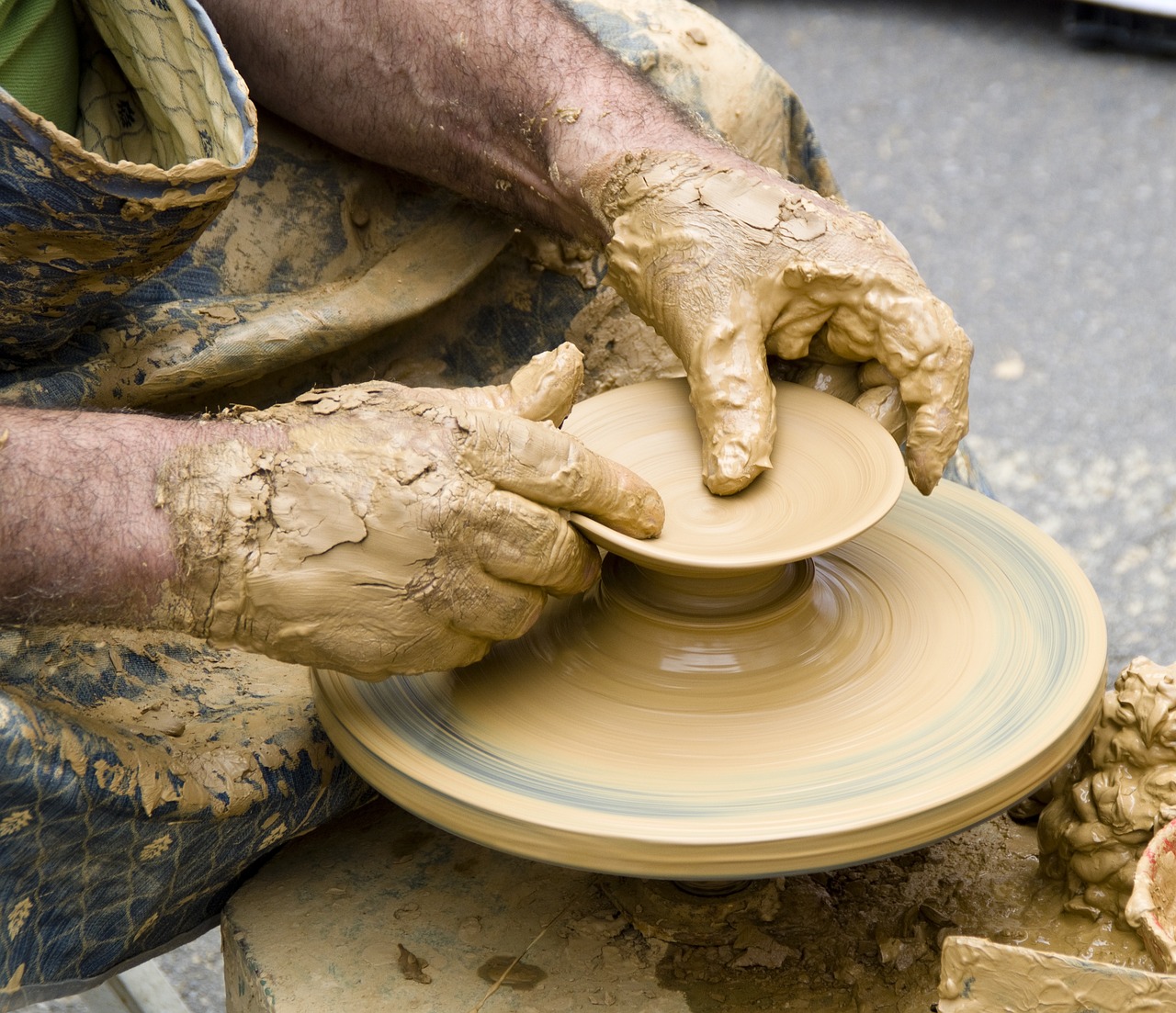
Understanding Clay Types
When it comes to ceramics, the first step is understanding the various types of clay available, each with its own unique properties and characteristics. Choosing the right clay can be the difference between creating a stunning piece of art or a frustrating experience. So, what are the most popular types of clay you'll encounter?
One of the most common types is earthenware. This clay is known for its porosity and is often used for creating decorative pieces and pottery. It fires at a lower temperature, typically between 1,830°F and 2,100°F, which means it retains a soft, earthy quality. Earthenware is perfect for beginners because it’s easy to work with and forgiving, allowing for a lot of creativity.
Next up is stoneware, which is a favorite among many experienced ceramists. Stoneware is denser and less porous than earthenware, making it ideal for functional items such as dishes and mugs. It fires at higher temperatures, between 2,190°F and 2,400°F, resulting in a durable finish that is often microwave and dishwasher safe. The rich, earthy colors of stoneware can add a beautiful touch to your kitchenware.
If you’re looking for something more refined, porcelain is the way to go. This clay is known for its white color and translucent quality when fired at high temperatures (around 2,300°F to 2,500°F). Porcelain can be a bit tricky to work with due to its delicate nature, but the results are stunning. It’s perfect for creating fine china, intricate sculptures, and other delicate pieces.
To help you understand these types better, here’s a quick comparison table:
| Type of Clay | Firing Temperature | Characteristics | Best For |
|---|---|---|---|
| Earthenware | 1,830°F - 2,100°F | Porous, soft | Decorative pieces, pottery |
| Stoneware | 2,190°F - 2,400°F | Dense, durable | Functional items, kitchenware |
| Porcelain | 2,300°F - 2,500°F | Translucent, fine | Fine china, delicate sculptures |
Each type of clay has its strengths and weaknesses, and the choice ultimately depends on what you want to create. Are you aiming for a rustic look with earthenware, or do you want the elegance of porcelain? Understanding these differences can help you make informed decisions that will elevate your ceramic creations.
In addition to these three main types, there are also specialty clays like raku and paper clay. Raku is known for its unique firing process that creates beautiful, unpredictable results, while paper clay incorporates paper fibers, making it lighter and easier to handle. Exploring these options can be an exciting adventure as you dive deeper into the world of ceramics!
In summary, understanding the various types of clay is essential for anyone looking to create stunning ceramics at home. Each type offers different challenges and rewards, and experimenting with them can lead to some truly remarkable pieces. So, which type will you choose for your next project?

Essential Tools for Beginners
When diving into the world of ceramics, having the right tools can make all the difference between a frustrating experience and a fulfilling creative journey. Whether you're just starting out or looking to refine your skills, understanding the essential tools is crucial. Imagine trying to bake a cake without a mixer; it’s the same with ceramics. The right tools not only enhance your capabilities but also inspire your creativity.
So, what tools do you really need? Let's break it down into some of the most important items that every beginner should have in their toolkit. First up is the **potter's wheel**. While not mandatory for hand-building, it opens up a whole new realm of possibilities if you decide to venture into wheel throwing. Next, you’ll want a set of **hand tools**, which typically include a variety of shaping, trimming, and cutting tools. These can range from simple wooden modeling tools to more specialized metal scrapers.
Another essential is a **rolling pin**, which is perfect for flattening out clay into slabs for various projects. Think of it as your trusty sidekick, helping you create uniform pieces with ease. To keep your workspace organized and tidy, a **clay cutter** is invaluable for slicing through blocks of clay without mess. And let’s not forget about a **sponge**; it’s perfect for smoothing surfaces and adding moisture to your clay as you work.
In addition to these basics, having a **work surface** is vital. A sturdy, flat surface will allow you to work comfortably and effectively. Some potters prefer a dedicated pottery table, while others make do with a kitchen countertop. It's all about what works best for you! Finally, a good **apron** is essential to keep your clothes clean from clay dust and spills. It’s a small investment that pays off in maintaining your wardrobe.
Here’s a quick overview of the essential tools you should consider:
| Tool | Purpose |
|---|---|
| Potter's Wheel | For shaping clay into symmetrical forms. |
| Hand Tools | For trimming, shaping, and detailing your pieces. |
| Rolling Pin | For creating flat slabs of clay. |
| Clay Cutter | For cutting and slicing clay blocks. |
| Sponge | For smoothing and adding moisture to clay. |
| Work Surface | For a stable and clean workspace. |
| Apron | To protect your clothes from clay and stains. |
As you gather your tools, remember that ceramics is as much about personal expression as it is about technique. Feel free to explore and add tools that resonate with your style and needs. With the right tools in hand, you'll be well on your way to creating stunning ceramic masterpieces!
Q: Do I need to buy all these tools at once?
A: No, start with the basics and gradually add to your collection as you gain experience and discover what works best for you.
Q: Can I use regular kitchen tools for ceramics?
A: While some kitchen tools can suffice, investing in specialized pottery tools will yield better results and enhance your creative process.
Q: What is the best type of clay for beginners?
A: Earthenware is often recommended for beginners due to its ease of use and forgiving nature.

Hand-Building Techniques
Hand-building is not just a technique; it's an art form that allows you to express your creativity in the most tactile way possible. Whether you're a novice or a seasoned artist, mastering hand-building techniques can open up a world of possibilities in your ceramics journey. Imagine molding the clay with your own hands, feeling its texture, and shaping it into something unique and personal. With hand-building, there are no limits; the only boundary is your imagination!
There are three primary hand-building techniques that every aspiring ceramist should explore: pinch pots, coil building, and slab construction. Each of these methods offers distinct advantages and allows for a variety of creative expressions. Let’s take a closer look at each technique:
- Pinch Pots: This is perhaps the simplest and most intuitive method. By pinching the clay between your fingers, you can create small bowls or vessels. It's a fantastic way to get a feel for the clay and develop your skills.
- Coil Building: This technique involves rolling out coils of clay and stacking them to build larger structures. It’s perfect for creating intricate designs and allows for more complex shapes.
- Slab Construction: Here, you roll out flat pieces of clay (slabs) and assemble them to form your desired shape. This method is excellent for creating boxes, plates, and tiles.
Each of these techniques can be combined and modified to suit your artistic vision. For instance, you might start with a pinch pot base and then add coil elements to create a more intricate design. The beauty of hand-building lies in its versatility and the personal touch it adds to your creations.
As you delve into these techniques, remember that practice is key. Don’t be discouraged if your first few attempts don’t turn out as expected. Think of each piece as a stepping stone on your journey to mastering ceramics. Just like any other craft, the more you work with clay, the more comfortable and skilled you will become.
In addition to the techniques, consider the tools that can enhance your hand-building experience. A few basic tools can make a world of difference:
| Tool | Function |
|---|---|
| Potter's Needle | For cutting and scoring clay. |
| Wooden Rib | For smoothing surfaces and shaping clay. |
| Sponge | For adding moisture and smoothing edges. |
| Rolling Pin | For flattening clay into slabs. |
Using the right tools can elevate your hand-building experience, making it easier to achieve the results you desire. So, equip yourself with these essentials, and you'll find that your creativity can flourish even more!
Ultimately, hand-building is about exploration and experimentation. Don't be afraid to try new things, mix techniques, and let your personality shine through your work. The journey of creating ceramics is as fulfilling as the final product itself. So roll up your sleeves, get your hands dirty, and let the magic of clay take you on an adventure!
Q: What type of clay is best for hand-building?
A: Earthenware and stoneware clays are great options for hand-building, as they are versatile and forgiving for beginners.
Q: Can I use regular kitchen tools for ceramics?
A: Absolutely! Many kitchen tools can be repurposed for ceramics, such as rolling pins for slabs or knives for cutting clay.
Q: How do I know when my clay is ready to be fired?
A: Your clay should be completely dry and firm to the touch before firing. Look for a consistent color and texture throughout.

Pinch Pot Method
The is one of the most accessible and enjoyable techniques for beginners venturing into the world of ceramics. Imagine molding a piece of clay with your hands, shaping it into a unique form that reflects your creativity. This method is not only simple but also incredibly satisfying, allowing you to create everything from small bowls to intricate sculptures. To start, you’ll need a ball of clay, which you can easily find at any craft store or online. The beauty of pinch pots lies in their versatility; you can create a variety of shapes and sizes depending on your vision.
To create your own pinch pot, follow this simple step-by-step process:
- Start with a Ball of Clay: Take a piece of clay about the size of a tennis ball and knead it to remove air bubbles.
- Create a Hole: Use your thumb to press down in the center of the ball, creating a small hole.
- Pinch the Edges: Gently pinch the walls of the pot with your fingers, rotating it to maintain an even thickness.
- Smooth the Surface: Use a damp sponge or your fingers to smooth out any rough spots, ensuring your pot is comfortable to touch.
- Let It Dry: Allow your pinch pot to dry to leather-hard consistency before decorating or firing.
As you work, remember that the key to a successful pinch pot is control. You want to maintain an even thickness throughout the wall of your pot, generally aiming for about a quarter-inch thickness. This will help prevent cracking during the drying and firing processes. Don't be afraid to experiment with different shapes or sizes! Each pinch pot you create can be a reflection of your personality, showcasing your artistic flair.
Once you’ve mastered the basic pinch pot, consider adding decorative elements or combining it with other techniques. You can attach coils or slabs to your pinch pot for added complexity, or even carve designs into the surface. This method is a fantastic way to express your creativity, and each piece you create is truly one-of-a-kind.
In summary, the pinch pot method is not just about making pottery; it’s about discovering your own artistic voice. So, roll up your sleeves, grab some clay, and let your imagination flow. You might just surprise yourself with what you can create!
Q: What type of clay is best for pinch pots?
A: Earthenware clay is a great choice for beginners, as it’s easy to work with and fires at lower temperatures.
Q: Can I use any tools while making pinch pots?
A: While your hands are the primary tools, you can use a sponge, a wooden stick, or even a knife for smoothing and detailing.
Q: How long should I let my pinch pots dry?
A: It’s best to let them dry slowly and evenly, which can take anywhere from a few hours to a couple of days, depending on the size and thickness.
Q: Can I glaze my pinch pots?
A: Absolutely! Once your pinch pot is fired, you can apply glaze to add color and finish. Just make sure to follow glazing instructions carefully.
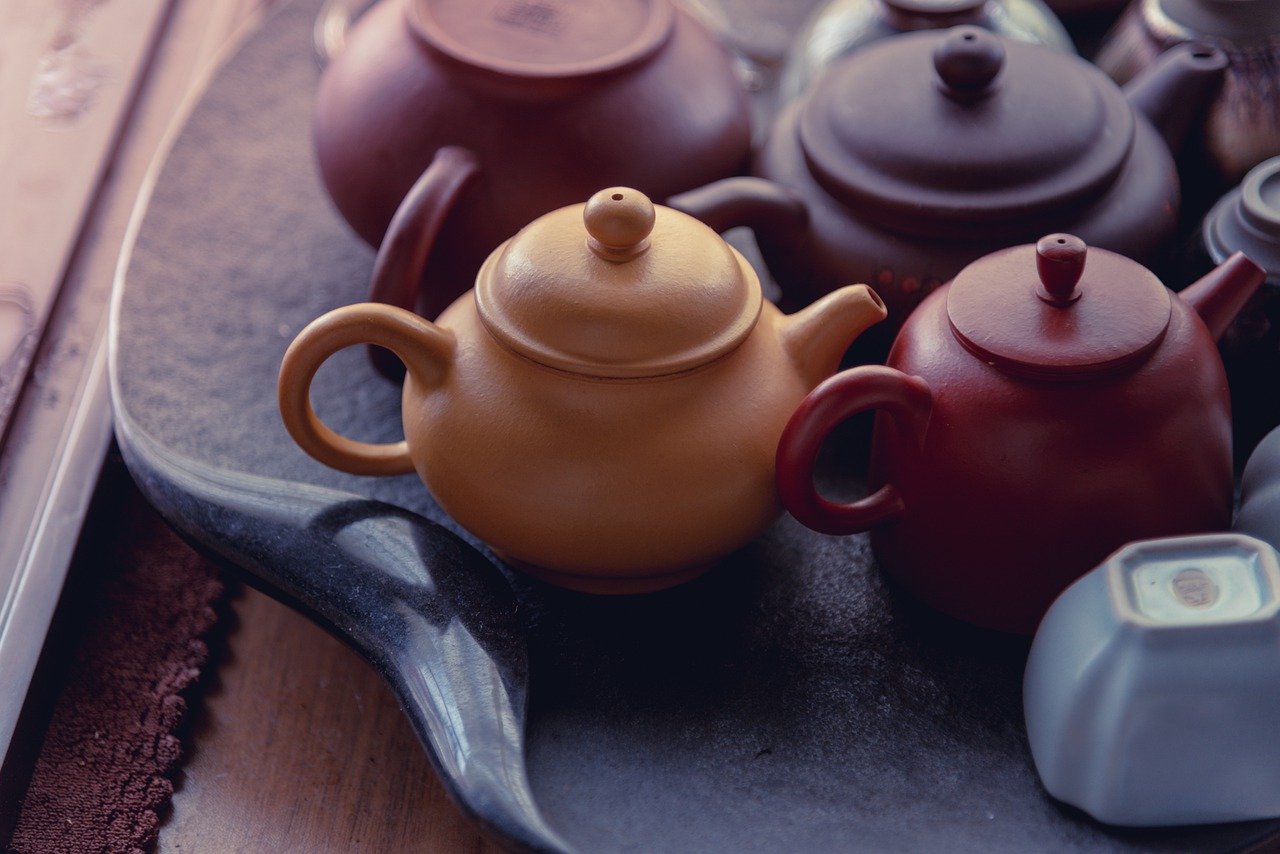
Coil Building Technique
The is one of the most fascinating and versatile methods in ceramics, allowing artists to create intricate and unique forms. Imagine sculpting a beautiful vase or a stunning bowl, all crafted from simple coils of clay. This technique is not only accessible for beginners but also offers endless possibilities for creativity and design. To get started, you'll want to gather a few essential items: a block of clay, a work surface, and some basic tools like a knife and a sponge. The beauty of coil building lies in its simplicity and the tactile experience it provides.
To master the coil building technique, begin by rolling out your clay into long, even coils. Think of these coils as the threads of a tapestry, each one contributing to the overall design of your piece. As you roll, aim for a consistent thickness—about the width of your pinky finger is a good rule of thumb. Once you have your coils ready, it’s time to start stacking. Begin by placing one coil on your work surface and gently pressing it into a circular shape. This will be the base of your creation.
As you add more coils, remember to blend and smooth the edges where they meet. This step is crucial, as it helps to create a seamless look and ensures that your piece is structurally sound. Use your fingers or a sponge to gently blend the coils together, creating a smooth transition between each layer. You can even experiment with different techniques to add texture or patterns to your piece. For instance, try using a fork or a wooden tool to create grooves or designs along the surface.
One of the most exciting aspects of coil building is the ability to create height and depth. As you stack more coils, consider how you want your piece to look. Do you want it to be tall and elegant, or short and stout? The choice is yours! You can even add decorative elements, such as handles or spouts, using smaller coils. Just remember to attach them securely by scoring the surfaces and adding a little slip (a mixture of clay and water) to help them adhere.
After you’ve shaped your piece to your liking, it’s essential to let it dry slowly and evenly to avoid cracking. Cover it with plastic to retain moisture, checking it periodically to ensure it doesn’t dry out too quickly. Once your piece is leather-hard, you can refine the shape further, adding details or smoothing out any rough spots. This is where your creativity can truly shine, as you can personalize your piece with unique designs and textures.
Finally, once your coil-built creation is completely dry, it’s time for the exciting part—firing! But before you jump into that, remember to check for any air bubbles or weak spots that might compromise your piece during firing. With patience and practice, the coil building technique can lead to stunning results, transforming simple coils of clay into beautiful works of art that showcase your individual style.
- What type of clay is best for coil building? For beginners, earthenware or stoneware clay is ideal as they are easy to work with and forgiving during the firing process.
- Can I combine coil building with other techniques? Absolutely! Many artists incorporate coil building with slab construction or pinch pots to create more complex forms.
- How do I know when my piece is ready for firing? Your piece should be completely dry and feel firm to the touch. A good test is to gently press a finger into the clay; it should not leave an impression.
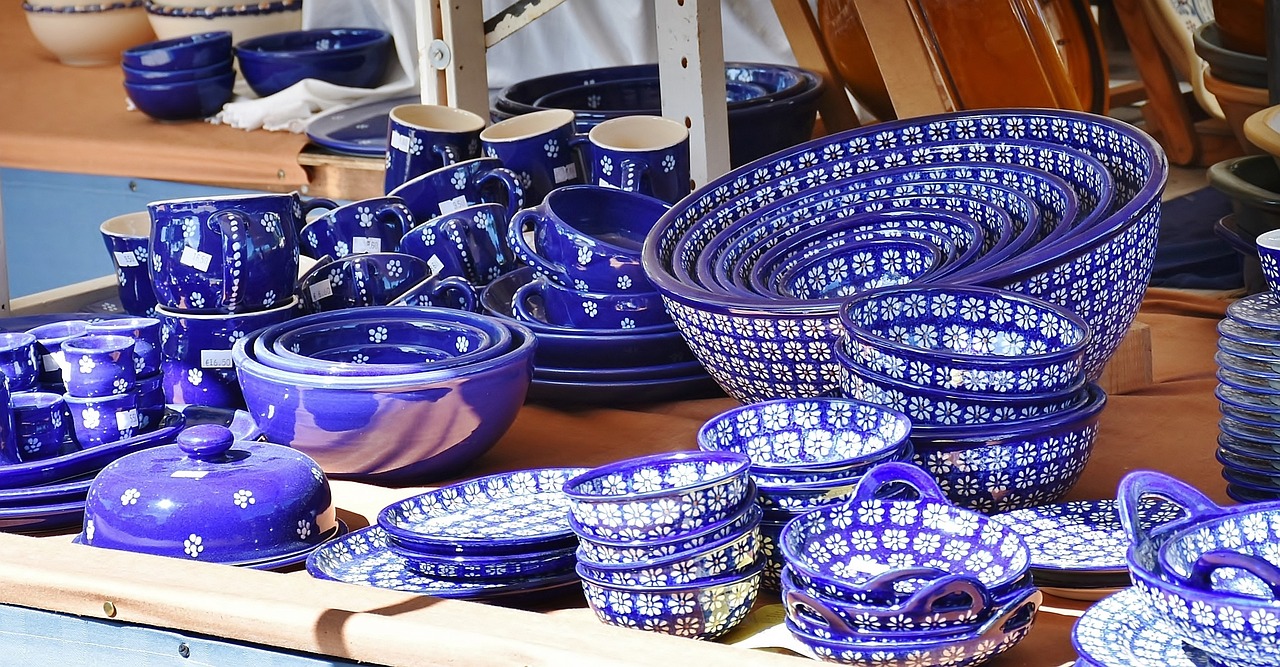
Understanding Glazing
Glazing is an essential aspect of ceramics that transforms your pieces from simple clay forms into vibrant, eye-catching artworks. Think of glazing as the icing on a cake; it not only enhances the visual appeal but also serves a protective function. There are various types of glazes, each offering unique finishes, colors, and textures that can dramatically change the look of your ceramics. Understanding these different glazes is crucial for any ceramist looking to elevate their work.
When it comes to glazes, you have a few categories to consider:
- Glossy Glazes: These glazes provide a shiny finish that reflects light beautifully, making colors appear more vibrant.
- Satin Glazes: Offering a middle ground, satin glazes provide a soft sheen that is less reflective than glossy finishes.
- Matte Glazes: These glazes absorb light rather than reflect it, giving a more subdued and earthy appearance.
- Transparent Glazes: Perfect for showcasing the clay body or underglaze designs, these glazes allow the surface beneath to show through.
- Opaque Glazes: These completely cover the clay body, providing a solid color that can mask imperfections.
Applying glaze can be a creative process in itself. You can brush, dip, or spray glaze onto your ceramic pieces, each method offering different results. For instance, brushing allows for detailed control, while dipping can create a more uniform layer. It’s essential to experiment with these techniques to find what works best for your style and the specific piece you are creating.
Before glazing, ensure your ceramics are bisque-fired, which means they have undergone an initial firing to harden the clay but are still porous enough to absorb glaze. This step is crucial as it prepares your pieces to accept the glaze properly. After glazing, your ceramics will need to go through a second firing, known as the glaze firing, which melts the glaze and fuses it to the clay body, creating that beautiful, durable finish.
Keep in mind that the firing temperature can affect the outcome of your glaze. Different glazes have specific firing ranges, and using the wrong temperature can lead to unexpected results, such as running or bubbling. Always refer to the manufacturer's guidelines for the best results.
In summary, glazing is a powerful tool in ceramics that can enhance your artistic expression. By understanding the types of glazes, application techniques, and firing processes, you can achieve stunning results that showcase your creativity. So, grab your brushes and glazes, and let your imagination run wild!
Q: What is the difference between earthenware, stoneware, and porcelain glazes?
A: Each type of clay requires different glazes due to their firing temperatures and characteristics. Earthenware glazes are often more colorful and are fired at lower temperatures. Stoneware glazes are more durable, fired at higher temperatures, and can have a more rustic look. Porcelain glazes are typically very smooth and can be quite delicate, requiring precise firing temperatures.
Q: Can I layer different glazes on my ceramics?
A: Absolutely! Layering glazes can create interesting effects and depth in your pieces. Just be sure to test your combinations on small samples first to see how they interact during firing.
Q: How do I fix mistakes in glazing?
A: If you make a mistake, you can often sand down the glaze once it’s fired and reapply it. Alternatively, you can create a new layer of glaze over the mistake, but be cautious about how it might affect the final appearance.
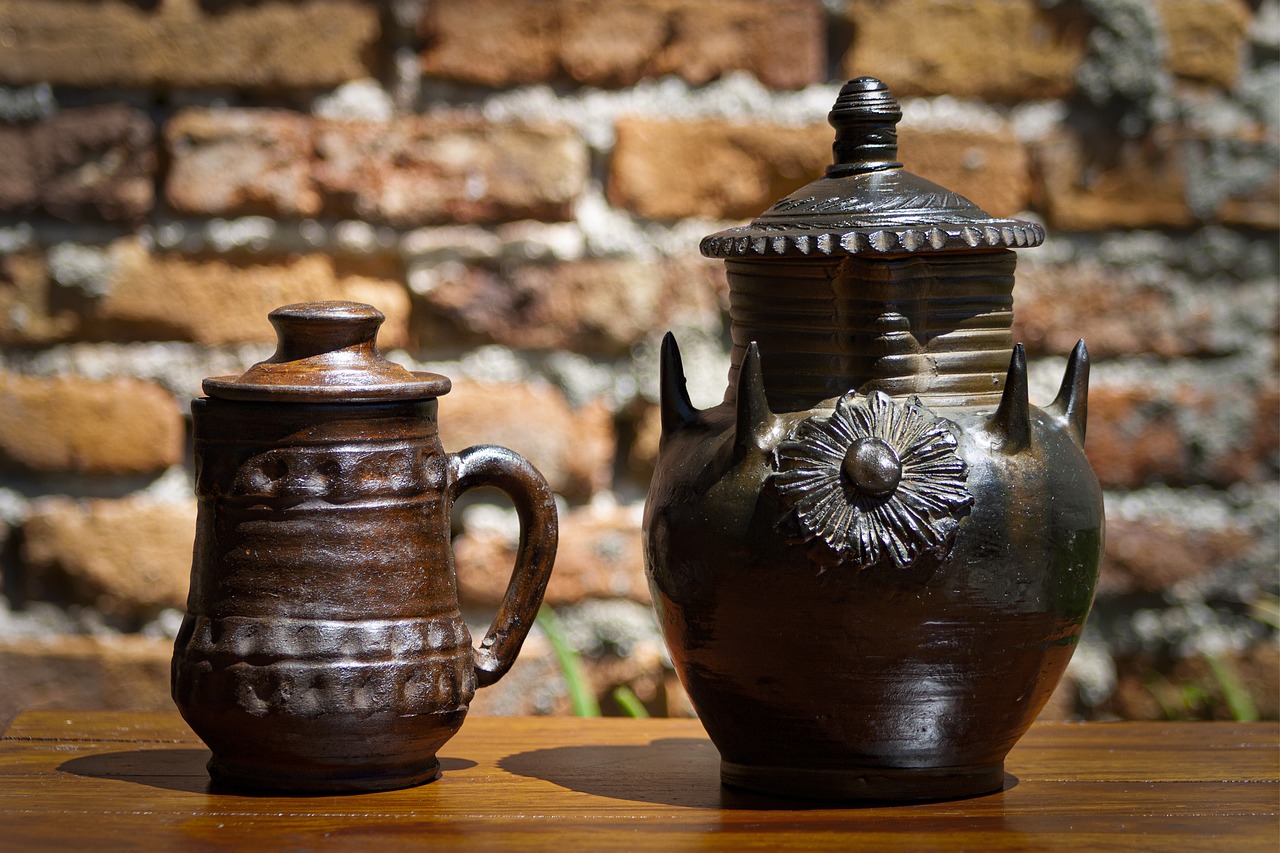
Firing Your Ceramics
Firing is one of the most crucial steps in the ceramics process, transforming your soft clay creations into durable, functional art pieces. Think of firing as the moment your artwork undergoes a metamorphosis, much like a caterpillar turning into a butterfly. Without this vital step, your beautiful sculptures and dishes would crumble at the slightest touch. So, let’s dive into the firing process, the types of kilns you can use, the temperatures required, and how to prepare your pieces for this transformative journey.
First off, let's talk about kilns. A kiln is essentially an oven specifically designed for firing ceramics. There are several types of kilns, each with its own unique features and benefits:
| Type of Kiln | Description | Best For |
|---|---|---|
| Electric Kiln | Easy to use and ideal for beginners, these kilns heat up quickly and provide consistent temperatures. | Small to medium-sized projects |
| Gas Kiln | Offers more control over the atmosphere inside the kiln, allowing for unique effects on glazes. | Experienced ceramists looking for specific results |
| Wood Kiln | Creates a natural ash glaze effect, imparting a unique character to each piece. | Artistic projects where unpredictability is desired |
Next, let’s discuss firing temperatures. Ceramics typically undergo two main firing stages: biscuit firing and glaze firing. Biscuit firing usually occurs at a temperature range of 1,830°F to 2,185°F (1,000°C to 1,200°C). This initial firing hardens the clay and prepares it for glazing. After applying your glaze, the second firing occurs at a higher temperature, usually between 1,830°F and 2,330°F (1,000°C to 1,300°C), depending on the type of glaze used. This step melts the glaze, creating a glass-like surface that enhances both the durability and beauty of your ceramics.
Preparing your pieces for firing is equally important. Here are some essential tips:
- Ensure your pieces are completely dry before firing to prevent cracking or exploding in the kiln.
- Check for air bubbles within the clay, as these can cause your piece to break during firing.
- Use kiln wash on your kiln shelves to prevent your pieces from sticking.
Firing your ceramics can be an exhilarating experience. Imagine the anticipation as you wait for the kiln to cool, revealing the final results of your hard work. It's like opening a present on your birthday; you never know exactly what you'll find, but the excitement is palpable! Remember, each firing teaches you something new, so don't be afraid to experiment and learn from the outcomes.
Q: How long does the firing process take?
A: The entire firing process can take anywhere from 8 to 12 hours, depending on the type of kiln and the size of your load. However, cooling down can take an additional 12 to 24 hours.
Q: Can I fire ceramics at home?
A: Yes, if you have access to a suitable kiln. Electric kilns are particularly popular for home use due to their ease of operation.
Q: What should I do if my piece cracks during firing?
A: Unfortunately, cracked pieces cannot be repaired once fired. It's essential to check for air bubbles and ensure thorough drying before firing to minimize this risk.
In summary, firing your ceramics is a thrilling and essential part of the creative process. By understanding the types of kilns, firing temperatures, and preparation techniques, you can ensure that your artistic endeavors culminate in stunning, durable pieces that you can be proud of.

Safety Precautions
When diving into the world of ceramics, safety should be your top priority. Working with clay, glazes, and kilns can be an exciting journey, but it can also pose certain risks if proper precautions are not taken. First and foremost, always wear appropriate personal protective equipment (PPE). This includes gloves to protect your hands from chemicals in glazes, goggles to shield your eyes from dust and splashes, and a mask to avoid inhaling fine particles, especially when sanding or mixing materials.
It's also essential to maintain a clean and organized workspace. This not only helps you work more efficiently but also minimizes the risk of accidents. Ensure that your work area is free from clutter, and keep tools and materials stored safely when not in use. If you’re working with a kiln, make sure it’s well-ventilated and observe all manufacturer instructions to prevent any hazardous situations. The temperature can get extremely high, so be cautious and avoid touching the kiln immediately after firing.
Furthermore, be aware of the materials you are using. Some clays and glazes contain toxic substances, such as lead or silica, which can be harmful if ingested or inhaled. Always read labels carefully and choose non-toxic options whenever possible. If you're unsure about a product, don’t hesitate to do your research or consult with a more experienced ceramist. Here’s a quick reference table to help you understand the potential hazards of common materials:
| Material | Potential Hazard | Precaution |
|---|---|---|
| Clay | Silica dust inhalation | Wear a mask when sanding |
| Glazes | Toxic chemicals | Use gloves and work in a ventilated area |
| Firing Kiln | High temperatures | Keep a safe distance and use heat-resistant tools |
Lastly, never underestimate the importance of knowing your limits. Ceramics can be a physically demanding hobby, and it’s crucial to take breaks and listen to your body. If you feel fatigued or overwhelmed, step back and take a moment to recharge. By following these safety precautions, you can enjoy the creative process of ceramics while minimizing risks and ensuring a safe environment for yourself and others.
Q: What should I wear while working with clay?
A: It's best to wear old clothes that you don't mind getting dirty, along with gloves, goggles, and a mask to protect yourself from dust and chemicals.
Q: Are there any non-toxic alternatives for glazes?
A: Yes! Many brands offer non-toxic glazes that are safe for use in ceramics. Always check the label for safety certifications.
Q: How can I ensure my workspace is safe?
A: Keep your workspace organized, clean up spills immediately, and store tools safely. Ensure good ventilation, especially when using glazes.
Q: What should I do if I accidentally inhale clay dust?
A: If you experience difficulty breathing or any adverse effects, seek fresh air immediately and consult a medical professional if symptoms persist.
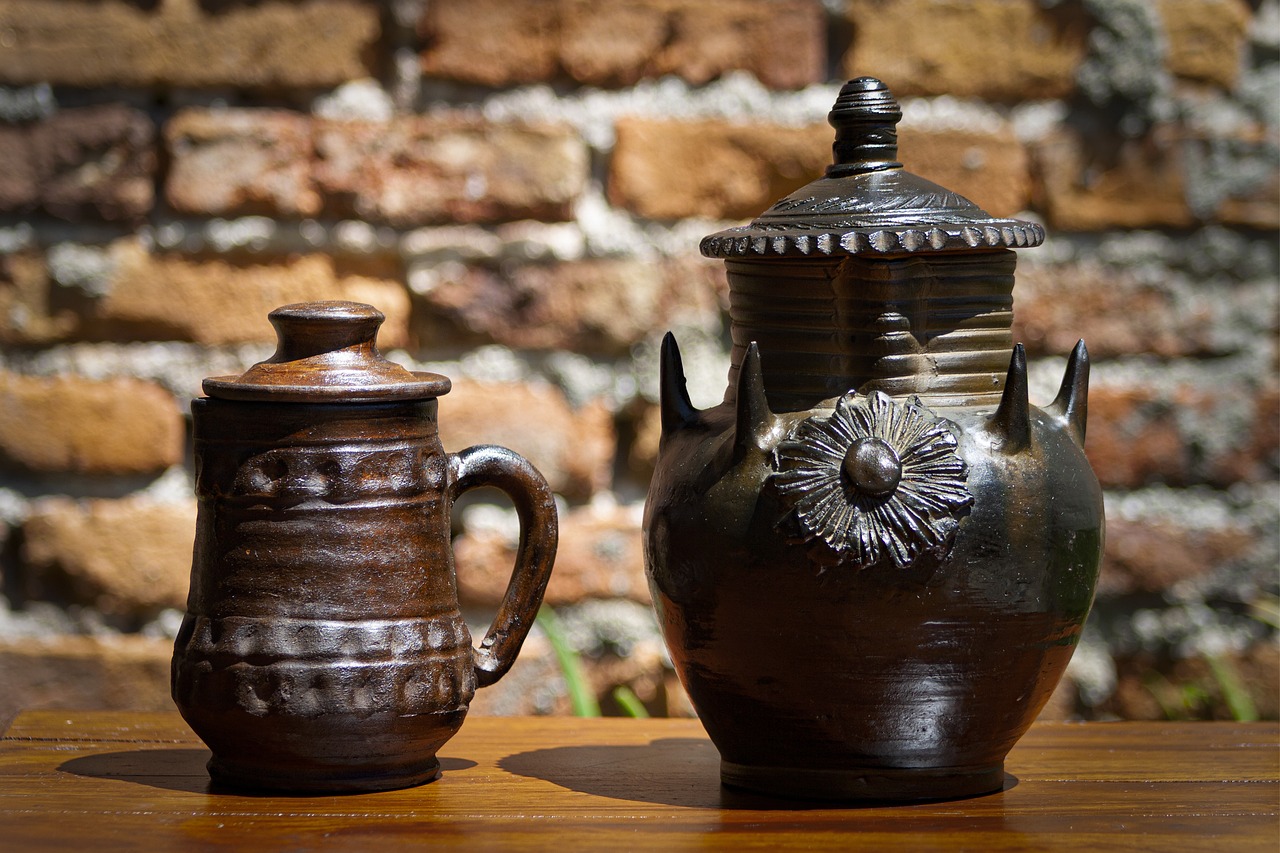
Common Mistakes to Avoid
When diving into the world of ceramics, it’s easy to get caught up in the excitement and forget some fundamental aspects of the craft. **Mistakes are a natural part of the learning process**, but avoiding common pitfalls can save you time, materials, and frustration. One of the biggest blunders beginners often make is not properly wedging their clay. This process is essential for eliminating air bubbles, which can lead to cracks during firing. Think of wedging as kneading dough; it ensures a smooth and consistent texture, setting a solid foundation for your creations.
Another frequent mistake is rushing through the drying process. Ceramics need time to dry evenly to prevent warping or cracking. If you’re impatient, you might find yourself with a beautiful piece that’s shattered in the kiln. Remember, **patience is key**! Try to establish a drying schedule based on the thickness of your work. For instance, larger pieces may need several days to dry completely, while smaller items can be ready in a few hours.
Additionally, many ceramists overlook the importance of using the right tools for their projects. Using improper tools can lead to uneven surfaces and less-than-perfect results. For example, a wooden rib is excellent for smoothing, but if you use a plastic one instead, you might end up with scratches on your piece. **Investing in quality tools** will pay off in the long run, enhancing your creative process and the quality of your work.
Another mistake to watch out for is neglecting the importance of glaze testing. Glazes can behave unpredictably, and applying a glaze directly to your piece without testing can lead to disastrous results. Always keep a test tile handy and try out your glazes before applying them to your finished work. This way, you can see how they interact with your clay and the firing process. **It's like trying on clothes before making a purchase**; you want to ensure the fit is just right!
Lastly, many artists forget to document their processes. Keeping a ceramics journal can be invaluable. Record your experiments with different clays, glazes, and firing temperatures. This will help you track what works and what doesn’t, allowing you to refine your technique over time. It’s like having a map for your creative journey, ensuring you don’t get lost along the way.
To summarize, here are some common mistakes to avoid in ceramics:
- Not wedging clay properly.
- Rushing the drying process.
- Using the wrong tools.
- Neglecting glaze testing.
- Failing to document your processes.
By being aware of these common pitfalls and taking proactive steps to avoid them, you can enhance your ceramics journey and create stunning pieces that reflect your unique artistic vision. Remember, every mistake is a stepping stone to improvement, so embrace the learning process and keep creating!
Q: What is the best type of clay for beginners?
A: Earthenware clay is often recommended for beginners due to its workability and forgiving nature. It fires at lower temperatures and is great for hand-building techniques.
Q: How long does it take for ceramics to dry before firing?
A: The drying time can vary based on the thickness of your pieces, but generally, allow at least 24-48 hours for smaller items and several days for larger ones.
Q: Can I use regular paint on my ceramics?
A: No, regular paint is not suitable for ceramics. Instead, use ceramic glazes that are specifically designed for high temperatures in the kiln.
Q: What safety precautions should I take while working with clay?
A: Always wear a mask when sanding or working with dry clay to avoid inhaling dust. Also, ensure your workspace is well-ventilated, especially when using glazes and other materials.
Q: How do I know when my ceramics are ready to fire?
A: Your ceramics should feel completely dry to the touch and should not feel cool or damp. A good test is to gently press your finger against the surface; if it leaves an impression, it’s not ready.

Inspiration for Your Projects
Finding inspiration is crucial when diving into the world of ceramics. It’s like looking for the spark that ignites your creativity. Sometimes, the best ideas come from the most unexpected places! Whether you’re a novice or a seasoned artist, tapping into various sources can help you create stunning pieces that reflect your unique style and imagination.
One of the most vibrant sources of inspiration is nature. The colors, textures, and shapes found outdoors can be translated into your ceramic work. Imagine the smooth curves of a river stone or the intricate patterns on a leaf; these can all inspire your designs. For instance, consider creating a series of bowls that mimic the colors of a sunset or vases that echo the spirals of seashells. The beauty of nature is all around us—just step outside and observe!
Art, in its many forms, is another wellspring of inspiration. From classical paintings to contemporary installations, the art world offers endless possibilities. Visit local galleries or explore online platforms like Pinterest and Instagram. You’ll find countless artists sharing their ceramic creations, which can spark your own ideas. Take a moment to analyze what draws you to certain pieces. Is it the color? The form? The texture? Understanding what resonates with you can lead to the development of your own artistic voice.
Sometimes, inspiration can come from within your own community. Engaging with fellow ceramists can open up a world of ideas. Consider joining a local pottery class or a ceramics club. These spaces are not just about learning techniques; they are also about sharing experiences and inspiration. You might find that someone else's approach to a project inspires you to try something new. Collaborations can also yield surprising results, merging different styles and techniques into a single piece.
Don’t forget about the power of everyday life. The objects we use daily can be a rich source of inspiration. Look at the mugs you drink from, the plates you serve food on, or even the decorative items in your home. How can you improve upon these designs? What new twist can you add? Sometimes, the best ideas come from asking, “What if?”
Lastly, keep a sketchbook handy. Jot down your thoughts, ideas, and even doodles whenever inspiration strikes. This practice not only helps you to remember your ideas but also encourages you to explore them further. You might find that a simple sketch evolves into a fully realized ceramic piece. Remember, inspiration is everywhere; it’s all about how you choose to see it!
- Where can I find inspiration for my ceramic projects? Inspiration can be found in nature, art, everyday objects, and through interactions with other artists.
- How can I develop my own style in ceramics? Experiment with different techniques and materials, and take note of what resonates with you. Keep a sketchbook to document your ideas.
- What are some common sources of inspiration for artists? Many artists draw inspiration from their surroundings, cultural heritage, and personal experiences.
- Is it important to collaborate with other artists? Yes! Collaborating can lead to new ideas and techniques that you may not have considered on your own.
Frequently Asked Questions
- What type of clay should I use for beginners?
For beginners, earthenware clay is often recommended. It's easy to work with, fires at lower temperatures, and is perfect for creating decorative pieces. If you're looking for something a bit sturdier, stoneware clay is a great option as it’s durable and can be used for functional items.
- Do I need a kiln to make ceramics at home?
While having a kiln is ideal for firing your ceramics, there are alternatives. You can use a home oven for low-fire clays and some glazes, but keep in mind that it won't achieve the same temperatures as a kiln. If you're serious about ceramics, investing in a kiln is worth considering.
- What safety precautions should I take when working with clay?
Safety is crucial in ceramics. Always wear a mask when sanding or working with dry clay to avoid inhaling dust. Use gloves when handling glazes and ensure your workspace is well-ventilated. Also, keep your tools organized to prevent accidents.
- How can I avoid common mistakes in ceramics?
To avoid pitfalls, always plan your projects before starting. Take your time with each step, especially during drying and firing. Additionally, keep your clay at the right moisture level—too dry or too wet can lead to cracks or warping.
- Where can I find inspiration for my ceramic projects?
Inspiration can come from everywhere! Nature, art, and even everyday objects can spark your creativity. Visit local galleries, explore online platforms like Pinterest, or join a ceramics community to share ideas and get motivated.
- What are some basic tools I need to start making ceramics?
Essential tools include a rolling pin, cutting wire, pottery knife, and sponge. These will help you shape and refine your pieces. As you progress, you can add more specialized tools like rib tools and texture stamps.
- How do I apply glaze to my ceramics?
Applying glaze can be done in several ways: dipping, brushing, or spraying. The method you choose depends on the effect you want. Make sure to apply it evenly and avoid the bottom of the piece to prevent it from sticking to the kiln during firing.



















